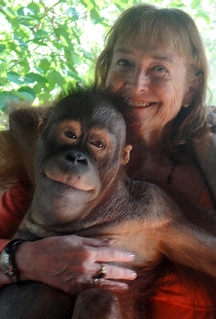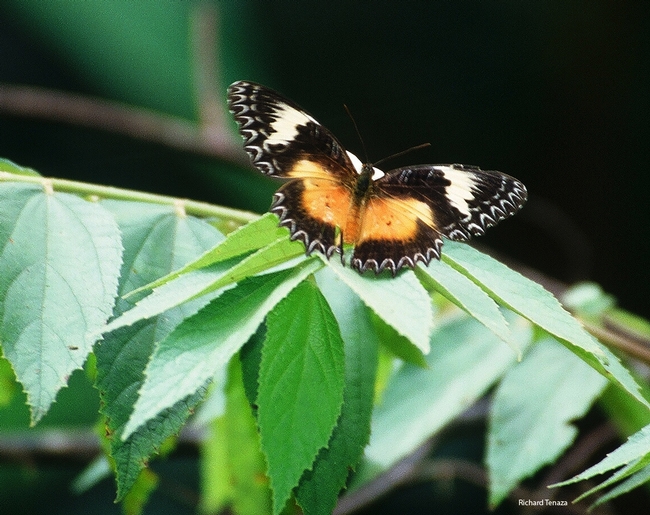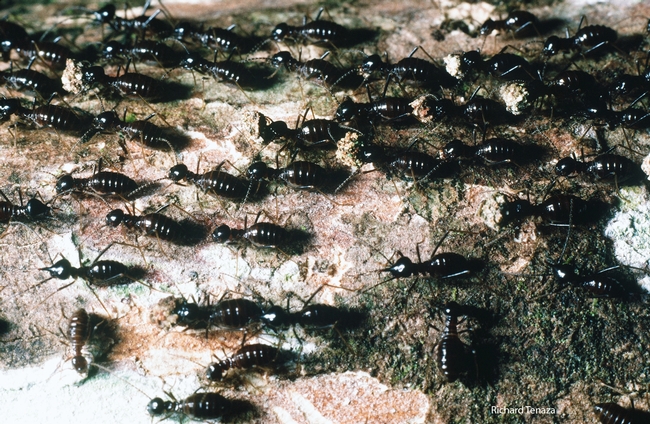
Those who attend the free public event, “Mentawai: Listening to the Rainforest,” on Sunday, April 22 on the UC Davis campus will find out.
The unique art/science fusion program, held appropriately on Earth Day, will be presented at 7 p.m. in the UC Davis Main Theatre. Doors open at 6:30. The event is affiliated with the UC Davis Department of Theatre and Dance and the UC Davis Art/Science Fusion Program.
The program is the work of scholar/performer/composer Linda Burman-Hall, professor of music/ethnomusicology at UC Santa Cruz, and biologist Richard Tenaza, professor of biological sciences, University of the Pacific, Stockton.
Tenaza's UC Davis connection: he received his doctorate in zoology from UC Davis in 1974.
Burman-Hall will present an electronic sound collage composition and videography, coupled with Tenaza’s field recordings and photography of threatened and endangered species in Indonesia’s Mentawai Islands, located more than 100 miles west of Sumatra.
In the abstract, Burman-Hall asks: “What does the rainforest tell us about ourselves and the world? In the Mentawai Islands of Indonesia, wildlife communicates using a complete spectrum of sound that exceeds the range and timbre of a western orchestra. More than 50 meters overhead, female gibbons sing expressive duets in the tree-tops. Hundreds of unique species of birds, frogs, and insects also call and chorus, and in the midst of this sonorous world live indigenous tribes who have listened to the rainforest and existed harmoniously with its flora and fauna for millennia.”
“Mentawai, Listening to the Rainforest, is a extraordinary opportunity to enhance environmental literacy,” said artist Donna Billick, co-founder and co-director of the UC Davis Art Science Fusion Program. “Listening engages all our senses to a heightened awareness that brings consciousness into the present moment. This approach to research, using sound image and videography, is as good as it can be. I applaud Linda Burman-Hall and Richard Tenaza for drifting out into the Art/Science borderland to bring back the Mentawai gifts.”
Billick, a noted artist who created the six-foot-long bee sculpture in the Häagen-Dazs Honey Bee Haven on Bee Biology Road, UC Davis, will be one of the respondents (asked for their views) following the presentation. Other respondents are UC Davis faculty members Lynne Isbell, professor of anthropology; Andrew Marshall, associate professor of anthropology; Sarah Hrdy, professor emerita of anthropology, Henry Spiller, associate professor of music (ethnomusicology).
The program will showcase wildlife of the rainforest. Tenaza, a wildlife biologist, photographer, world traveler and adventurer, has conducted research in the Arctic, Antarctica, Africa, South America, China, and throughout Southeast Asia with a focus on Indonesia. He specializes in primates and has worked extensively to document and preserve Kloss's gibbon (Hylobates klossii) of Mentawai.
And insects? Among the Mentawai insects Tenaza has photographed are nasute termites and assorted butterflies, including the Malay Lacewing (Cethosia hypsea) and The Cruiser (Vindula erota).
All in all, it promises to be "fantastic," says entomologist/artist Diane Ullman, who does triple duty as (1) professor and former chair of the UC Davis Department of Entomology (2) associate dean for undergraduate academic programs in the College of Agricultural and Environmental Sciences, and (3) the co-director and co-founder of the UC Davis Art/Science Fusion Program.
Attached Images:

Malay Lacewing butterfly (Cethosia hypsea). Photographed by Richard Tenaza and identified by professor/butterfly expert Arthur Shapiro of UC Davis.

Nasute termites. Photographed by Richard Tenaza and identified by research scholar/insect photographer Alex Wild of the University of Illinois.